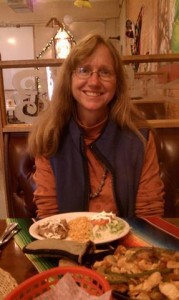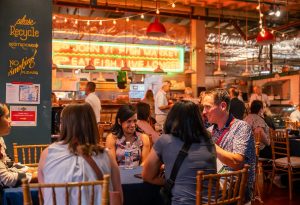Food offers a window on the world and a mirror on ourselves. I’ve always loved exploring with food. Trying new tastes and ingredients. Learning about the history of a dish and the history of a culture through an ingredient. Meeting the people who grow and prepare food I’m eating.
When I started reading tourism scholarship in the early 1990s it was natural to apply it to food. And I was dismayed to find that food was only a sideline within hospitality services—or, worse, that trying new food was criticized as an expression of colonialist, hegemonic impulses. I knew that I was privileged to be able to explore food and not worry about having enough of it, but I also was respectful and learned about other people through food. Thus began my thinking about culinary tourism, and in 1996 at an American Folklore Society conference, I presented the phrase as a framework for exploring the meanings of eating other cultures’ foods. That led to publications and definitions—“eating out of curiosity,” “adventurous eating,” “the intentional, exploratory participation in the foodways of an Other.”
Unbundling Culinary Tourism
That unwieldy definition sounded academic enough to give the study of food credibility! But it also offers frameworks that expand our thinking about both food and tourism. I outline them here, and readers can apply them to their own situations and interests (and pocketbooks). Also, culinary tourism can occur at home, in one’s kitchen or library, but it frequently motivates travel.
Foodways—Food is more than just the stuff we eat. All the activities and thinking surrounding that stuff contribute to what it means—performance, concepts, production, procurement, preservation, preparation, presentation, consumption, and even cleanup and disposal. We can be culinary tourists, exploring a food culture, through any of those activities. Cooking classes are currently a popular way to learn about another cuisine and frequently include shopping in local markets, too. Helping out on a farm is another popular form, but few people think of cleaning up after eating as a way to be a tourist. It was an adventure to me though, as a city girl, to take the table scraps out to the chickens when I stayed in a village in Laos (and with my cousins in the Appalachian mountains). Similarly, preservation methods differ around the world and offer insights into a food culture—squid drying in the sun in Korea, fish frozen in snow in Alaska, grapes sundried into raisins, hams hanging in a smoke house.
“Other”—Culinary tourism can explore the foodways of other regions, religions, ethnicities, socioeconomic classes, genders, ages, families − any group different from the tourist’s familiar world. Even exploring locally grown products can be tourism for someone used to shopping in supermarkets! Exotic ingredients and dishes are fun, but what’s new and different to one person is old hat to another.
Venues—Restaurants are an obvious venue for culinary tourism, but festivals, fairs, holiday celebrations, grocery stores, cookbooks, cooking magazines, literature, films, television and the internet also offer wonderful opportunities for exploring food. I love to travel, but sometimes it’s just not possible, so these other media offer virtual travel. We can also look more closely at the food we eat every day, seeing and tasting it, as if we’re outsiders—discovering that it carries fascinating memories, histories and identities.
Most of all, though, culinary tourism offers a way to explore the various meanings of food and ways we can connect to and through food. It reminds us that we all need to eat to survive, but we all attach our own cultures, circumstances and personalities onto it. With that in mind: eat, taste, explore, and experience!
−By Dr. Lucy M. Long, Director, Center for Food and Culture







